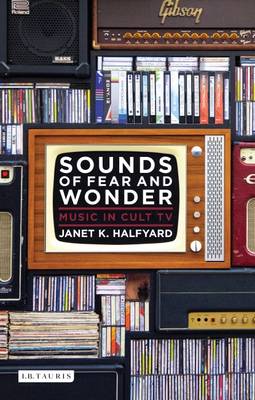15%OFF

Stock image for illustration purposes only - book cover, edition or condition may vary.
Sounds of Fear and Wonder: Music in Cult TV
Janet K. Halfyard
€ 31.99
€ 27.23
FREE Delivery in Ireland
Description for Sounds of Fear and Wonder: Music in Cult TV
Paperback. The first full and focused guide to music's contribution to popular tv drama. Num Pages: 224 pages. BIC Classification: APT; AV. Category: (UP) Postgraduate, Research & Scholarly. Dimension: 216 x 138. .
Characters and plot developments, similarly, are enhanced by their musical accompaniment. The different scoring strategies employed in supernatural and horror-based genres, comprising for example True Blood and Supernatural, are considered alongside cult shows set in our reality, such as Dexter, The Sopranos and 24. These discussions are complimented by in-depth case studies of musical approaches in two high-profile series: Buffy the Vampire Slayer and Hannibal. Written from a musicological standpoint but fully accessible to non-musicologists, the book significantly advances television and music studies.
Characters and plot developments, similarly, are enhanced by their musical accompaniment. The different scoring strategies employed in supernatural and horror-based genres, comprising for example True Blood and Supernatural, are considered alongside cult shows set in our reality, such as Dexter, The Sopranos and 24. These discussions are complimented by in-depth case studies of musical approaches in two high-profile series: Buffy the Vampire Slayer and Hannibal. Written from a musicological standpoint but fully accessible to non-musicologists, the book significantly advances television and music studies.
Product Details
Publisher
I.B. Tauris & Co. Ltd.
Format
Paperback
Publication date
2016
Condition
New
Number of Pages
232
Place of Publication
London, United Kingdom
ISBN
9781784530297
SKU
V9781784530297
Shipping Time
Usually ships in 5 to 9 working days
Ref
99-1
About Janet K. Halfyard
Janet K. Halfyard is Associate Professor at Birmingham Conservatoire, Birmingham City University, where she teaches film music, twentieth-century music and contemporary music. She is author of Danny Elfman's Batman: A Film Score Guide (2004), and co-editor of Music, Sound and Silence in Buffy the Vampire Slayer.
Reviews for Sounds of Fear and Wonder: Music in Cult TV
This Introduction is also an argument - for the importance of music within cult TV; for a new understanding of musical numbers in cult/quality shows; for the recognition of cult's sonic complexity. Ranging from Star Trek to The Sopranos, and Twin Peaks to True Blood, Janet K. Halfyard has an enviable ear for detail. Say it once more, with feeling: this is musical scholar-fandom at its finest. - Professor Matt Hills, Aberystwyth University, and author of Fan Cultures and Triumph of a Time Lord; Television scholars need this book. Others will simply want it. In the modestly titled An Introduction to Music in Cult TV, Halfyard combines a musicologist's understanding of technique with a rich comprehension of the series she analyzes. Her discussions of formal structure enlighten larger meaning. She begins by examining the difference between film and TV music. From historical background on earlier cult classics such as Star Trek, Twin Peaks, and The X-Files, and investigations of changes in opening themes and end credits music, she moves on to in-depth explorations of series such as Buffy the Vampire Slayer, with its extraordinary scoring, Supernatural, with its genre-shifting, and Hannibal, with its striking incorporation of sound. The inclusion of illuminating selections of scoring strengthens her case for our need to pay real attention to the importance of music and sound in television art. We should all applaud Halfyard's lucid, literate work. - Dr. Rhonda V. Wilcox, Professor of English, Gordon State College; Halfyard's book is a triumph of scholarship. It offers a fascinating and illuminating history of music and sound in television; a wealth of comparative analyses between television and film, and between different types of television shows; and it provides detailed, exquisite readings of the use of music in a range of programmes. Its clear and unambiguous focus on Cult TV means that not only do we learn a huge amount about the specifics of music (from live versus synth recordings; scoring; technological and aesthetic shifts; motifs and themes; and stock sounds, for example) but this also serves to re-invigorate and re-cast more general questions about the development of TV in general and Cult TV in particular. The discussion of the uses of music in intros, as an aspect of the role of intros at all in the age of streaming, is exceptional in this regard and also demonstrated the breath-taking range of knowledge this book has to offer. Intellectually stimulating; erudite, generous and deftly written this is a book every student or scholar of television drama - Cult or otherwise - should read. - Professor Matthew Pateman, Head of the Department of the Humanities, Sheffield Hallam University
